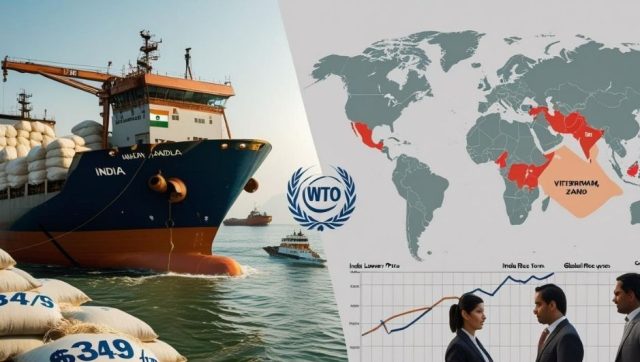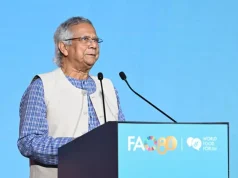From Amirul Momenin, Dhaka: India has once again become the focal point of global rice export discussions after offering 25% broken non-basmati rice at just $349 per ton, triggering what many are calling a full-fledged price war. Competing exporters like Pakistan, Vietnam, and Thailand are unable to match these prices, putting pressure on their positions in the global market.
Currently, Pakistan is exporting similar rice at $365 per ton, Vietnam at $362, and Thailand at $376. India’s pricing is $10 to $27 lower than its rivals, raising international questions about how the country is managing such low export prices.
Analysts suggest that heavy government subsidies are behind India’s aggressive pricing. Under India’s Minimum Support Price (MSP) policy, the procurement price for non-basmati paddy is around $265 per ton. Assuming a 66% milling recovery, the cost of producing rice stands at approximately $330 per ton. Adding transport, packaging, port charges, and other expenses brings the actual export cost to nearly $385 per ton. Despite this, India is exporting at $349, incurring a loss of about $36 per ton, likely covered by government subsidies.
This subsidy policy has drawn formal complaints at the World Trade Organization (WTO) from countries including the United States, Canada, Australia, and New Zealand. The complaints allege that India has exceeded the 10% subsidy limit set under the Doha Agreement, violating global trade norms.
Pakistan, on the other hand, has not engaged directly in India’s pricing war. Instead, it has maintained its focus on quality-driven markets like the European Union and the United Kingdom, and emphasized strategic supply and quality in African markets. As a result, even with India’s return to the global market, Pakistan’s rice exports have remained relatively stable—reaching 5.544 million tons in the first 11 months of the 2024–25 fiscal year, only 0.87% lower than the previous year.
However, challenges remain for Pakistan. A 3.7% drop in kharif season rice production has led to rapidly declining stocks since April 2025. Consequently, rice exports may fall by up to 15% in the April–June 2025 quarter.
India’s low pricing has also affected Vietnam and Thailand, especially in price-sensitive markets like Africa and the Middle East. Both countries are now reassessing their pricing strategies and exploring market realignment options.
This global price war in rice exports is not merely a matter of competition—it has become a critical issue of fairness in international trade. The world now awaits WTO’s ruling and any potential changes India may make to its export policies, which will likely shape the future trajectory of the global rice market.











